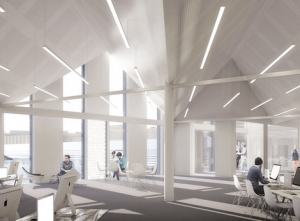 Being conscientious when you choose building materials is very important. Doing so can help reduce the carbon footprint of properties and make them greener. There are lots of alternative options here, including many biomaterials. You can use these in any kind of property, from homes to huge pieces of commercial architecture.
Being conscientious when you choose building materials is very important. Doing so can help reduce the carbon footprint of properties and make them greener. There are lots of alternative options here, including many biomaterials. You can use these in any kind of property, from homes to huge pieces of commercial architecture.
Plant-based biomaterials are some of the most interesting options because of their sustainability. They tend to be biodegradable and many can also sequester carbon rather than releasing it into the environment. This can help tackle climate and environmental problems. Below we will take a look at some of the best choices.
Hemp
Most people automatically think of drugs when they look at hemp. However, while it is a type of cannabis plant, it has very low levels of THC. The plant fibres are stiff and strong, making them useful for lots of industrial and commercial products. You can use hemp textiles for all kinds of things. There is also a composite material known as hempcrete that is a good alternative to concrete and other non-bio insulating materials.
Mycelium
This biomaterial comes from a fungus and has proven to be a good alternative to leather. It is fast growing, easy to cultivate, and feeds on agricultural waste. There are lots of potential uses for it, including clothing, furniture, and accessories like light shades.
Bamboo
Interestingly, many people think of bamboo as a type of wood. However, it is actually a grass. It is fast growing, sustainable, and sequesters a lot of carbon. You can use it to build entire properties because it is very strong yet incredibly light. Or you can use it for things like furniture and accessories.
Linoleum
This is one of the most versatile materials on the list. It is also one of the oldest, with the first patent dating back to 1860. It is a biodegradable substance, made by combining linseed oil with pine resin, sawdust, and cork dust. The most popular use of linoleum is flooring covers, an alternative to non-biodegradable plastic laminate. However, it is also a great option for furniture or even counter tops or cupboards.
Cork
While the dust can be used to create linoleum, the cork itself is an interesting building material. It is incredibly sustainable and biodegradable. In fact, people love using it because they can recycle or use it for composting. You can build structures from it or create items like furniture and accessories.
Speak to us about commercial architecture
All of the materials above are worth considering for different aspects of buildings and interiors. There are also lots of others, including timbers, bioplastics, and more. It is a really great idea to spend time looking at the options to see what kind of design you can achieve without putting more pressure on the environment.
Coffey Architects would love to help here. We really enjoy exploring materials and seeing which combinations can produce the best results. This could be for commercial architecture, a home, or even public buildings and community assets.
So, if you want to work with us, please get in touch.